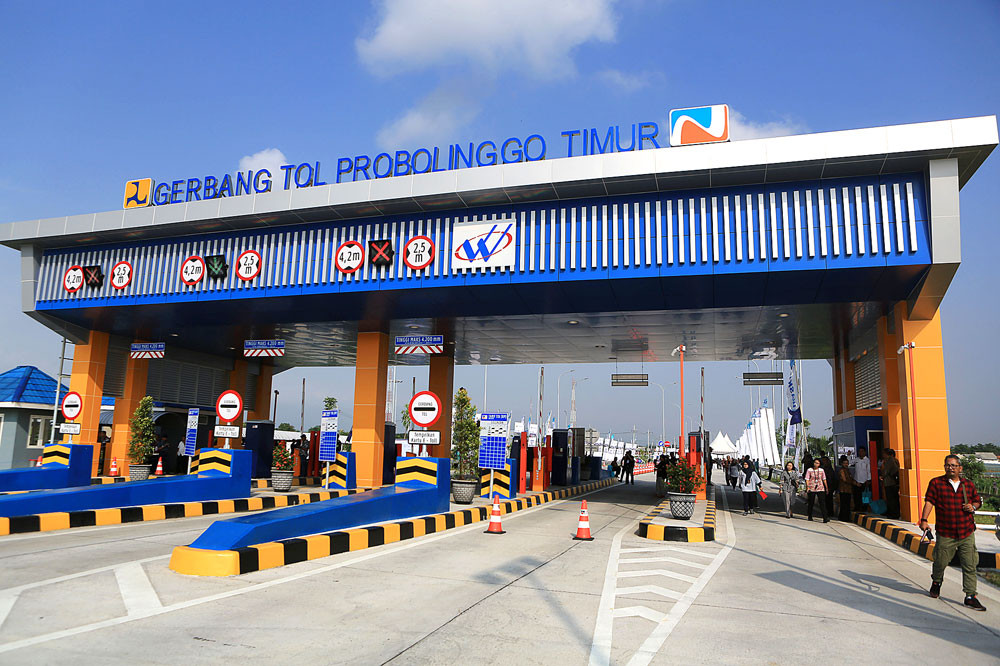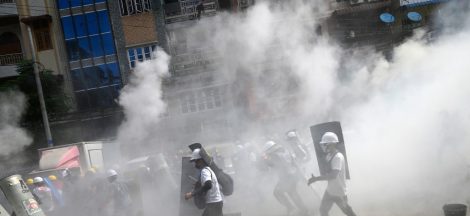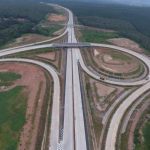2019 will see nine new toll roads, but that’s still not enough to cut logistics costs. Nine new toll roads in Java, South Sumatra, North Sulawesi and East Kalimantan with a combined length of about 400 kilometers will be inaugurated later this year, President Joko “Jokowi” Widodo told his Instagram followers in a message posted last Wednesday.

“The toll roads’ existence will boost interregional connectivity and improve logistics costs [and] efficiency,” the President said in his Instagram post.
The new toll roads, part of the 1,852 km span of toll roads targeted for development in 2015-2019, and include the 5.5 km Cinere-Jagorawi (Cijago) toll road from Kebun Raya Bogor to Kukusan in Depok, the 36.4 km Jakarta-Cikampek II South toll road. The 189 km Terbanggi Besar-Kayu Agung section and the 33.5 km Kayu Agung-Palembang-Betung Section 1, both part of the Bakauheni-Palembang toll road connecting (South Lampung and South Sumatra, are also planned for inauguration.
Also opening later this year are the 22.5 km Manado-Bitung toll road in North Sulawesi and sections 2-4 spanning 66.4 km of the Balikpapan-Samarinda (Balsam) toll road in East Kalimantan.
The new toll roads are certain to improve connectivity between cities and provinces. As to whether they will reduce logistics costs for the country’s commodities and industrial goods, Indonesian Trucking Association (Aptrindo) deputy chair Kyatmaja Lookman has replied, “not much”.
Kyatmaja acknowledged that while the new toll roads could improve traffic distribution and traffic efficiency, developing toll roads alone was not enough to reduce logistics costs. Such an outcome would require additional development in other parts of the logistics chain, such as warehousing and cargo loading and unloading.
“The government, for example, should direct the construction of warehouses near toll roads,” Kyatmaja told The Jakarta Post on Aug. 12.
“At present, cargo terminals are mostly located far from the toll road. The government can encourage the construction of cargo terminals along the Trans-Java toll road, [which] can help reduce transportation costs,” he added.
Kyatmaja also highlighted the importance of issuing regulations on time limits for loading and unloading at cargo terminals, since these logistical processes still took a long time to complete.
“Even though the toll roads will reduce costs, it will be useless if loading and unloading take a long time,” he underlined.
According to the Public Works and Housing Ministry, 949 km of toll roads were operating in May, out of the 1,852 km of toll roads planned for development in 2015-2019. When the nine additional roads open later this year, Indonesia will have 1,355.14 km in new toll roads.
Kyatmaja said, however, that many freight truck owners were still reluctant to use toll roads because of the high fees their operators charged. The average toll for large trucks on the new roads is about Rp 3,000 per km, which was considerably expensive compared to older toll roads that charged only about Rp 1,000, he said.
A freight truck traveling the Trans Java toll road from Jakarta to Surabaya, East Java, could pay Rp 1.3 million to Rp 1.5 million in tolls, or 35 percent of its transportation costs. Many trucks therefore preferred to use regular roads.
“Except when transporting perishable goods, many logistics vehicles still use arterial roads rather than the new toll roads,” Kyatmaja said.
Most of the vehicles used in Indonesia’s logistics industry were also not high-speed freight trucks designed for long-distance transport, he added. Freight trucks in Indonesia had an average speed of only 40-60 km per hour, while freight trucks in other countries averaged around 80-100 km per hour.
“So, traveling on a toll or an arterial road will not mean any significant difference (in speed). It is different in Japan or another country where the logistics vehicles are designed specifically for [driving on] highways,” he said.
Economist Bhima Yudhistira of the Institute for Development of Economics and Finance (Indef) said that logistics costs remained high in Indonesia at around 24 percent of gross domestic product.
Infrastructure development needed to be equipped with better clearance processing for improved logistics efficiency and reduced logistics costs, Bhima said, such as better customs, export and import procedures. Red tape also needed to be cut, he said. 2019 will see nine new toll roads, but that’s still not enough to cut logistics costs (Riza Roidila Muftim, The Jakarta Post)





 Infrastrucure, Human Resources Highlight 2020 State Budget Spending
Infrastrucure, Human Resources Highlight 2020 State Budget Spending 